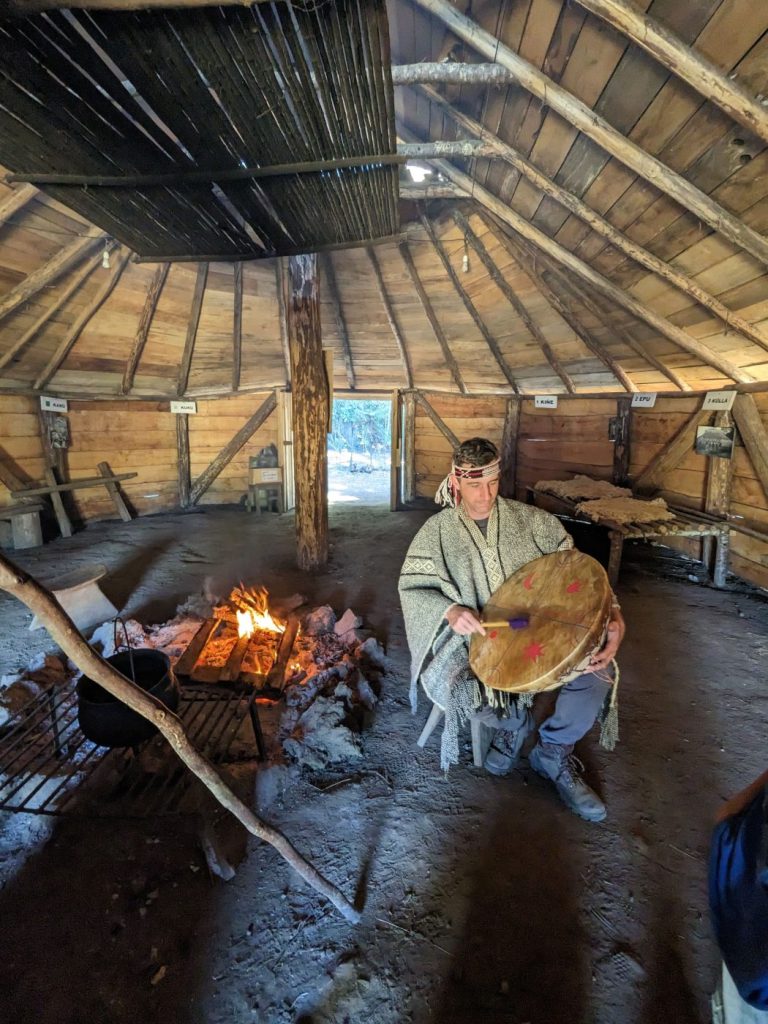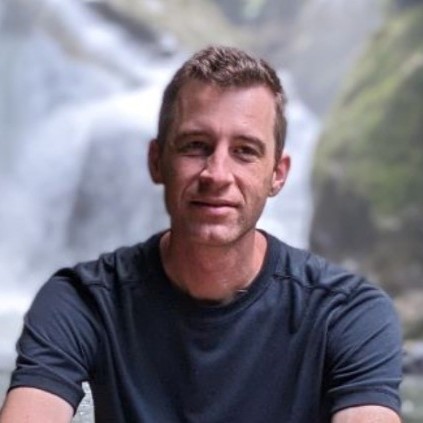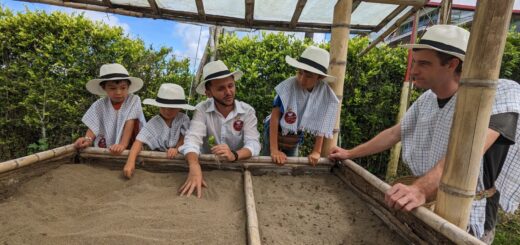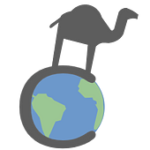The New Tourist: A Book Review
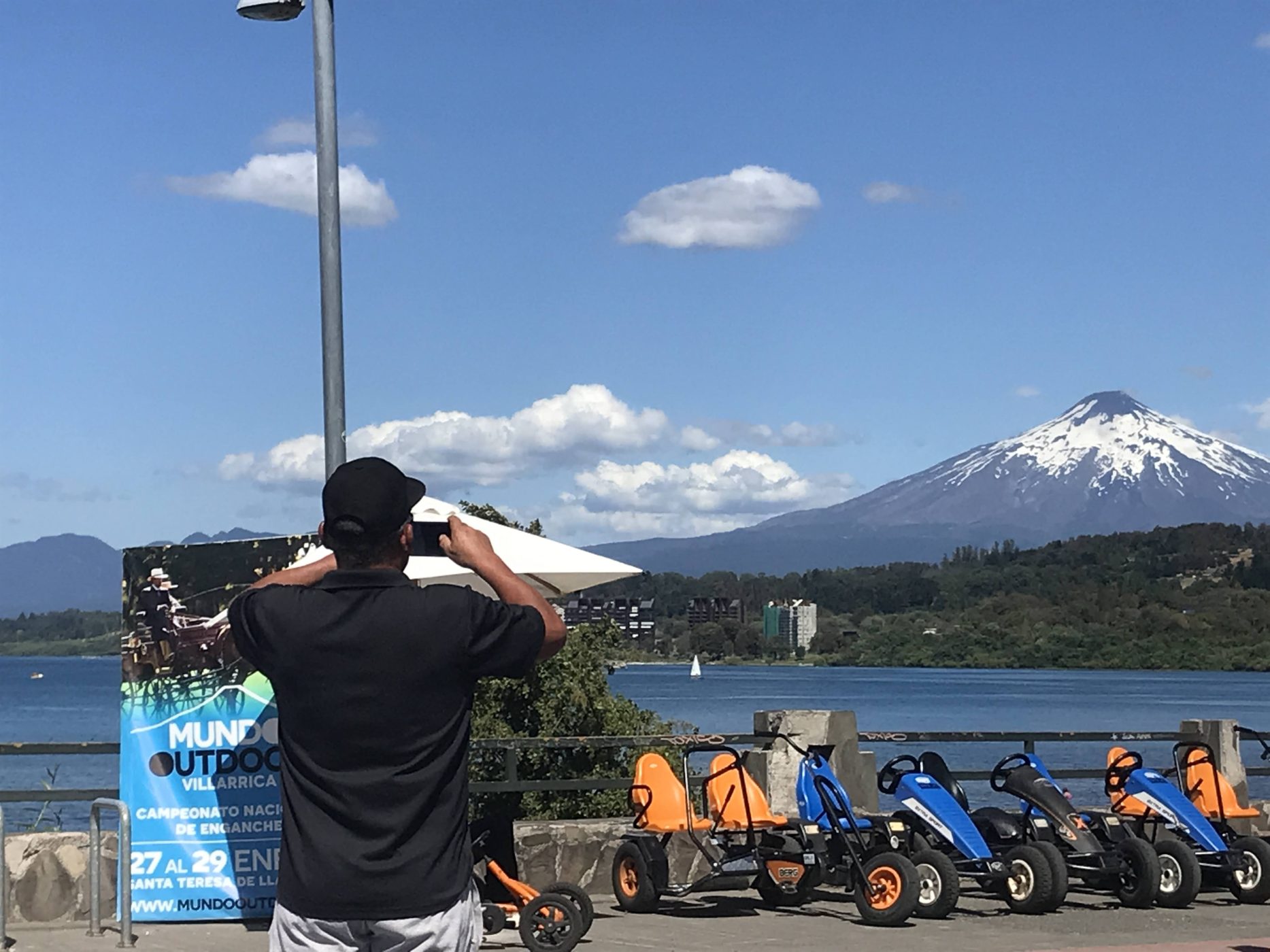
If you are passionate about travel but have misgivings about its effects, The New Tourist will equip you to wrestle with your doubts and ask better questions.
Ever since I started documenting our wanderings, I’ve had in mind to write a post that wrestles with the downsides of travel. I wanted to be clear-eyed about the costs. The burdens on local infrastructure and local well-being. Not to mention the environmental impacts. But I also wanted to highlight the positives of travel: personal growth, a boost to local economies, an incentive to conserve threatened ecosystems.
While the topic was close to my heart, and a frequent topic of conversation between Liuan and I, I could never find my way to writing it. I felt unqualified. Could I accurately weigh the positives and negatives if tourism from my armchair? I wasn’t sure I could do it justice, so I put it off.
I’m happy to report that someone else (much more qualified) did the job for me. The New Tourist: Waking Up to the Power and Perils of Travel, by author and journalist Paige McClanahan, applies analytic and journalistic rigor to these questions. If you are like me and feel deep down that international travel is a good thing, but can’t look away from the carbon emissions and destruction wrought by over-tourism—among many other misgivings—this book is a must read.
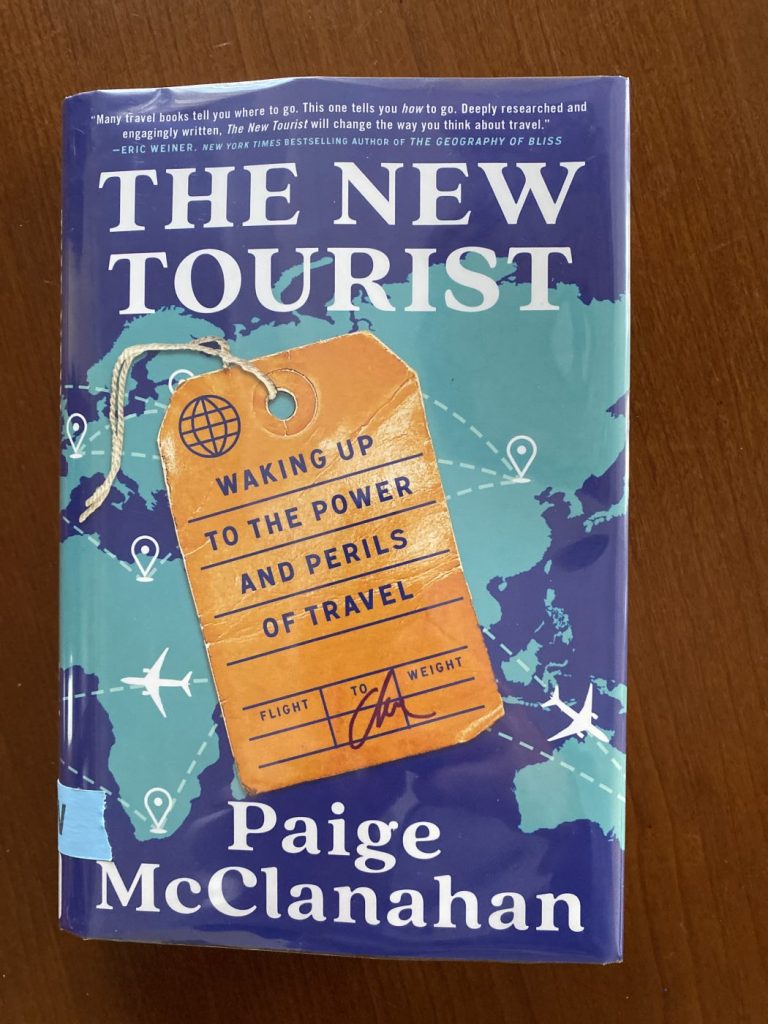
New Tourist vs. Old Tourist
Right away, the author dispenses with the “traveler versus tourist” dichotomy. There is no meaningful difference, she claims. In essence, we are all tourists when we engage in leisure travel.
Instead, she makes a distinction between the “old” and “new” tourist. The old tourist is a pure consumer. They are concerned with “getting their money’s worth.” As a paying customer, a location is treated as their amusement park; to be used and abused to enact their fantasies.
The new tourist recognizes each place as someone’s home. As such, they are concerned with being a respectful guest. The new tourist is aware of when locals reap the benefits, or not, from the influx of visitors. They ask questions.
We all, of course, would do well to behave like the new tourist.
Why Iceland is On Our Bucket List
The book begins with a well-researched origin story of guide books, and by extension, the tourism industry as a whole. Their scrappy beginnings remind me in many ways of the indie travel blogs of today.
She goes on to describe how travel received a major upgrade from guide books and travel agents, shifting to social media influencers and sites that allow you to be your own travel agent. I found it interesting to look behind the curtain and learn how we got to this place, and how it has driven change throughout the world.
Just as fascinating were her case studies on destinations that worked their way into the public imagination and onto our bucket lists. Iceland was my favorite case, being high on our own personal bucket lists. Told from the point of view of a Canadian woman who moves to Iceland with her Icelandic husband (who eventually wins the presidency), she reminds us that even back in 2003, Iceland was largely an unknown. As the author puts it, “in 2003, it was all too easy to think of Iceland (to the extent that anyone thought of the country at all) as a frozen flyover zone…”
It wasn’t until a remarkable social media campaign, where the government encouraged ordinary citizens to post about what they loved most about Iceland, along with stunning photos of the landscape, that Iceland’s tourism industry came into its own. Justin Bieber’s music video set in a grassy canyon bordered by sheer cliffs and waterfalls sealed the deal.
I must admit, when it comes to what’s trending, I am the dumbest person you’ll ever meet. I’m one of the strange few that don’t do social media. And I certainly couldn’t name, or even recognize, a song by Justin Bieber. Nonetheless, by means of the cultural ether perhaps, Iceland cemented its place on my bucket shortlist.
It’s a phenomenon McClanahan describes as a “groove on the map.” It starts with a local effort to boost—or sometimes repair, as in the cases of Liverpool or Colombia—their reputation as a place worth visiting. If successful, it can take on a life of its own. Social media posts and guidebook mentions spur more tourism, which generates more posting and mentions, driving ever more desire.
Of course, knowing all this makes you think: if the difference between a top destination and a passed-over one is marketing, could it be our bucket lists are all wrong? In my own experience, yes.
A Load of Wet Blankets, With Some Fresh Positive Takes
Tourism has gotten some bad press in recent years. There are no easy answers. But the author grapples with each issue while also exploring solutions and alternate viewpoints. Some of the issues she addresses include:
Carbon Emissions
Several months after we returned from our year of travel, Liuan and I got into an argument. I don’t remember the exact details, but the gist of it was, I was ready to plan our next international adventure, and Liuan wanted to wait and space out our long flights. I was so annoyed. It’s not like I don’t care. But who gets to judge which carbon emissions are worthwhile? Or what is the proper spacing? The Ecuadorians I worked with while volunteering on a coffee farm never have nor will take an international flight in their entire life. So maybe the answer is never again? It was irritating to both dampen my ambitions and admit that she was right.
In chapter five, entitled “Last Chance Saloon,” the author introduces the topic by taking on the last chance travel trend. Last chance travel is touring melting glaciers and other disappearing features due to climate change, marketed to tourists as “see it before it’s gone.” Some consider this kind of travel worth it for the environmental awareness it arouses in visitors, even though “their presence in front of it often increases the threat to its existence.” Subsequent studies have questioned this notion that visitors will put their new awareness to action.
But her main argument ends up being that an industry-wide solution is what’s needed. Individuals choosing not to fly is not replicable on a large scale, and therefore not a serious solution. While there are no market-ready technologies to bring aviation to net zero in the near-term, there are promising ideas being developed. Not exactly where we want to be. Nevertheless, the point is, we want to continue to foster global interconnectedness and cultural understanding through travel—seeing as we face problems the necessitate global coordination—while also quickly finding a path to decarbonize aviation.
Burden on Local Infrastructure and Environment
The more tourists there are, the more they’re despised. It’s not only the long lines at the coffee shops, trash in the gutters, or the selfie-stick sporting content creators blocking up the flow; it’s the skyrocketing housing prices and the sense that a place no longer prioritizes the people who make a home there.
The author documents a variety of interviews and case studies—covering Barcelona, Amsterdam, Hawaii, and more—that illustrate the different ways tourism wreaks havoc on nature and the local vibe when left unchecked. By the way, that canyon in Iceland is closed down to allow its ecosystem to recover after hordes of tourists followed in Justin Bieber’s prancing footsteps.
It doesn’t have to be this way, the author argues. In Kerala, a state in southern India, the people and local government wrested control of the tourism industry from international operators and refashioned it on their own terms. Now locals give popular Village Life Experience tours that directly benefit them financially.
Tourism also has the power to benefit the environment. We learned about his firsthand in Misahualli, a jungle village along the Napo River in Ecuador. The owner of the boutique hotel we stayed in described how development grew like a cancer, spreading from the newly-paved roads and eating away the jungle around the Napo. Sustainable tourism was the only economic check against razing the rainforest, and even against over-tourism. “Nobody is going to come to here to see the jungle if you can’t aim your camera without a luxury hotel ending up in the frame!”
In the book, an interviewee in Hawaii summarizes her work as “harnessing the power of tourism to care for Hawaii, rather than exploit the place or wear it down.” This is done by respecting nature’s limits and imposing rules, but also by engaging, educating, and welcoming visitors “with a sense of respect and aloha.”
My Favorite Quote From the Book:
Gelhorn described the new class of global wanderers as both “a vast floating population and an industry” that was “essential to many national economies.” (“Not that we are therefore treated with loving gratitude,” she went on, “more as if we were gold-bearing locusts.”)
Paige McClanahan, The New Tourist, p. 9
Original Citation: Martha Gellhorn, Travels with Myself and Another: A Memoir, p. 243
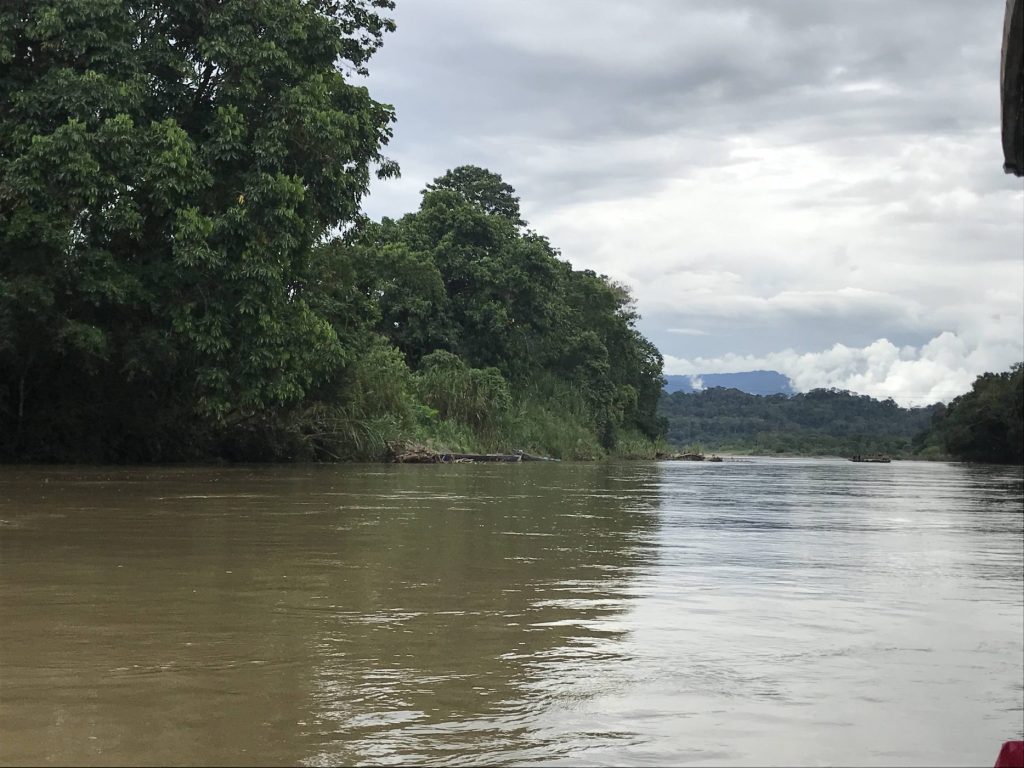

Does Travel Actually Bring Out Our Worst Selves?
Being an avid New York Times reader, I came across “The Case Against Travel” by Agnes Callard via a refutation by a regular Times columnist. I was curious and read both articles.
Callard argues that travel is a shallow pursuit. The tourist never grows or changes as much as they imagine. In fact, they are their worst selves, dehumanized as spectators to the society that surrounds them.
This caused me much troubled introspection, because it basically knee-capped everything I thought about travel. In the end, I had to conclude that maybe she was right sometimes, but not about everyone. Certainly not about me! But how far can one see past their own self-justification?
So I was really hoping The New Tourist would have a take. And to my delight, the final chapter did just that!
McClanahan fairly lays out Callard’s best points. But then she proceeds to pick it apart. What Callard is describing is the “old” tourist, the author insists. If we are open to it, travel can change us. I won’t spoil the entire argument, but the point I could most relate to is that travel forces us to revise our “prebaked” ideas about a place and grapple with the world as it really is.
Critiques: So Now What?
After Liuan also read the book, she commented that she wished there were more suggestions for how to embody the “new tourist” ethos in practice. Simply being aware doesn’t change anything.
In the introduction, McClanahan admits that tips and suggestions are not within the scope of her book. She aims to “provide you with a framework that will help you come up with your own questions, and inspire you to ask those questions” of yourself and the locations you visit. Essentially, she tells us, it’s up to us to figure what to do in any given situation.
Her view seems to be that local governments have the largest role to play in shaping tourism. Our job is to ask the tough questions. Is there more we can do? Perhaps a blog post on this topic is in the offing…
In Summary
My bread and butter is not typically book reviews. But this book was so attuned to the hard questions we had while engaging in our own travel that it seemed worth the trouble. I assume many readers of this blog will fall into the camp of those passionate about travel, but ambivalent about its effects. A fellow travel blogger’s recent post on the Maldives reminded me that we’re not alone in this.
I also liked the behind-the-scenes details in each of the places she describes. At some point, she argues that the tourist trap, and perhaps all tourism, is an intentional fantasy. On cobblestone streets lined by ye olde shoppes selling gelato, we pretend we are participating in a fairytale kingdom long ago and far away.
For some, it might be unsettling to have reality break the suspension of belief. But for our family, that’s the most fascinating part. Learning more about the lives, struggles, and joys of the people who call a place home is part of the experience. Just as our own physical wanderings have pulled back the veil of fantasy, so has reading this book.
